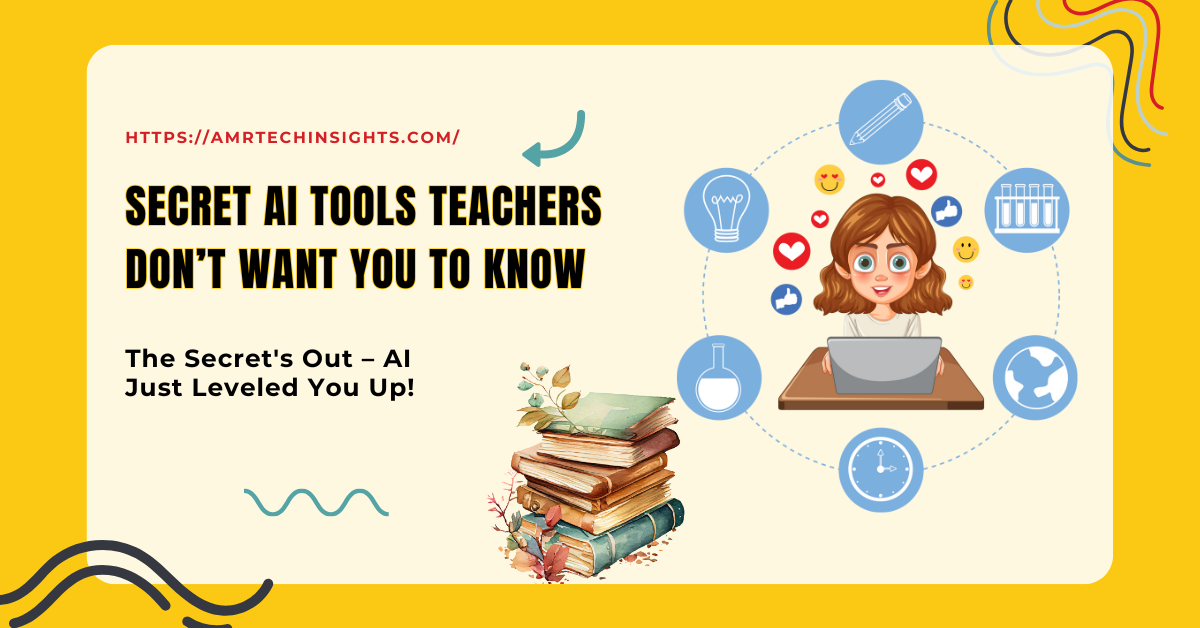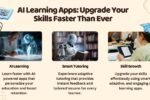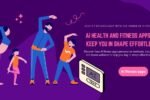Many individuals claim that “AI tools for teachers pose a danger.” Some people even think they will completely take over teaching. This is one of the greatest fallacies in today’s schools, and it’s keeping them from getting better.
Let’s get things straight. AI Tools for Teachers aren’t going to take over the classroom. Instead, these technologies help instructors perform their jobs more efficiently, encourage innovation, and allow students to learn at their own pace.
In this essay, I’ll clear up some frequent misunderstandings concerning AI tools for schools, tell you the facts, and show you why instructors should use these technologies in a responsible way.
Myth 1: “AI tools for teachers will take the place of teachers.”
This is the most prevalent fear I hear. AI Tools for Teachers can grade papers, answer questions, and even help create lesson plans, which is why some think it’s doing the teacher’s job.
But AI Tools Teachers rely on don’t take the role of the human component of education. There is no algorithm that can take the place of empathy, mentoring, or the ability to motivate a class. AI takes care of the boring stuff so teachers can focus on what matters: making connections and helping kids learn.
AI can do things automatically, but it can never replace the human connection, empathy, or mentorship that teachers provide.
For example, AI Tools for Teachers like Gradescope can grade multiple-choice examinations in seconds. Instead of spending hours on grading, educators can use that time to provide personalized feedback or support students individually who need extra help.
Many educators fear that AI will eventually replace their role in the classroom. But leading experts disagree – they argue AI works best as a support system rather than a replacement. For example, Edutopia’s discussion on AI in education
This misconception lives on because automation seems scary. But in practice, instructors have more flexibility, not less.

People typically think of AI tools as alternatives for teachers, yet they really help teachers by doing jobs that are the same again and over. For instance, Gradescope saves teachers time by automating grading so they can focus on getting students interested. AI doesn’t make people less connected; it makes them more connected by letting professors give each student their full attention. This picture shows how AI may be a collaborator in the classroom instead of a rival.
Myth 2: “AI Tools Teachers use make students lazy.”
Some people say that kids won’t think critically if they utilize AI-based tools like ChatGPT or Quizizz. People think that AI gives answers too readily.
The fact is that AI Tools Teachers use can actually help students learn more deeply. When applied correctly, AI Tools Teachers rely on encourage curiosity, problem-solving, and critical thinking instead of simply handing out solutions.
For students looking to practice smarter, I’ve reviewed the top platforms here: Which AI Tool Is Best for Exam Preparation?
Diffit, for instance, is one of the AI Tools for Teachers that lets instructors create reading materials for students at different skill levels. A struggling reader can access a simpler version of the same topic, while an advanced learner can tackle more challenging material. This way, all pupils stay engaged and continue progressing without falling behind.
AI technologies don’t provide you shortcuts; instead, they make you more curious and help you think critically when teachers are in charge.
We typically think of the hazards of using shortcuts instead of the ways they may help us learn, which is why this myth keeps going. Teachers still tell kids how to use AI safely, much like they did with calculators in math class years ago.

The idea that “AI makes students lazy” is entirely wrong. Students become more interested and driven to learn about things at their level when they use platforms like Quizizz and Diffit. AI can help both struggling and advanced learners since it can change to fit their requirements. This approach makes sure that all students feel welcome, interested, and treated fairly in class. The picture shows how students use AI not as a way to get things done faster, but as a way to learn faster.
Myth 3: “AI is only helpful for teachers who know a lot about technology.”
Many people think AI is too complicated and requires coding skills or strong digital knowledge. However, AI Tools for Teachers are designed to be user-friendly, so even educators who aren’t tech-savvy can use them effectively.
Truth: Most AI Tools Teachers use are designed to be simple and user-friendly-sometimes even easier than regular software. In fact, these AI Tools Teachers rely on are built specifically to support educators in the classroom.
For instance, Canva’s Magic Write lets instructors quickly write lesson plans, tests, or worksheets. You can use it as long as you are able to enter text into a search box. Eduaide.Ai also works as a teaching assistant by making lesson plans that are specific to your subject and grade level.
This myth persists because the term “AI” sounds intimidating. But even instructors who aren’t very tech-savvy can benefit from AI Tools for Teachers that offer step-by-step guidance and easy-to-use platforms.
Myth 4: “AI Tools for Teachers are not safe and are biased.”
This worry is partly true: AI models can show bias if they aren’t employed correctly. But thinking that all AI usage is dangerous means missing out on opportunities.
Correct use of AI Tools Teachers choose can make learning more robust and safe. Ultimately, AI Tools Teachers rely on still need guidance-educators are essential for showing students how to use these tools responsibly and ethically.
The teacher who guides AI is what makes it powerful. Responsibility, ethics, and creativity must come first.
Talking openly with pupils about AI’s limits is a beneficial way to educate digital literacy. AI Tools for Teachers can help instructors demonstrate how to fact-check and think critically, showing students that platforms like ChatGPT may occasionally make mistakes or give biased answers.
Concerns about bias and safety in AI are not unfounded, but rejecting AI entirely means missing its benefits. What’s needed is responsible integration. In fact, a Brookings research article on AI in the classroom
This myth persists because negative information spreads more quickly than positive information. Teachers may change the story and turn it into a learning opportunity by introducing AI into the classroom in a clear way.
Myth 5: “AI Tools for Teachers make classrooms unfair.”
Some critics argue that AI primarily benefits schools with substantial funding and access to advanced technology, thereby disadvantaging others.
The fact is that many AI Tools Teachers use are free or low-cost, even though access can sometimes be a challenge. By providing tailored help to every child, these tools truly level the playing field.
For example, free AI Tools Teachers recommend such as Quizizz make learning fun and engaging, while Magic School AI helps with lesson planning in real time without adding extra costs.
This fallacy continues to exist because not everyone has the same access to technology. AI Tools for Teachers can help close the education gap, rather than worsen it, when implemented thoughtfully and with proper support.
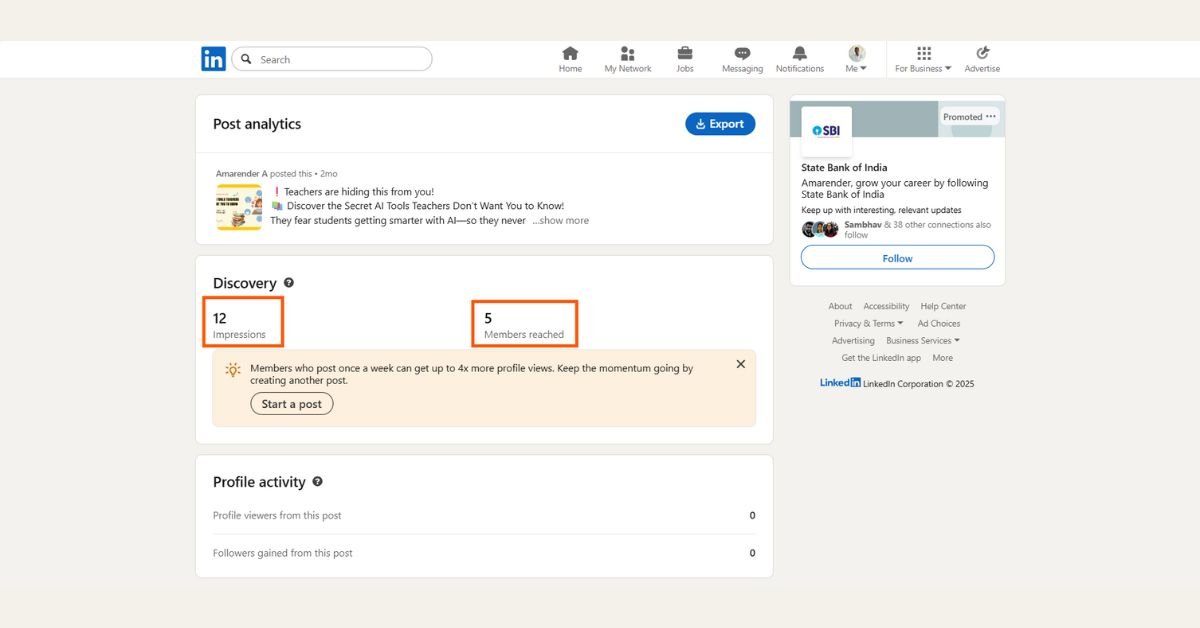
This screenshot indicates that even a short LinkedIn post concerning AI in education, like “Teachers are hiding from you,” got many views and impressions. The research indicates that teachers are interested in AI but are also hesitant about using it. It indicates that the topic of AI in schools is becoming more popular and needs further explanation. Even simple postings may get people talking and thinking about the potential of AI in education if they provide real findings.
Why Myths About AI Tools for Teachers Keep Going Around
Fear of change is the root cause of most misunderstandings. Teachers have always had to deal with new tools, such as chalkboards, projectors, and smartboards. Myths like “It will hurt learning,” “It’s too hard,” or “It will take the place of teachers” came up every time.
The truth is that every major change in educational technology has improved learning when instructors are in charge. AI Tools for Teachers are simply the next step in this evolution.
It is important to use AI tools in schools responsibly.
People often forget this important fact: AI is only as smart as the person who is controlling it. Teachers should be responsible for how pupils utilize these technologies.
Show students how to use AI-generated ideas in an ethical way by showing them how to reference them.
Point out the limits: Teachers should explain that AI Tools for Teachers may sometimes produce inaccurate or biased results, and students need to verify information carefully.
Encourage curiosity: Don’t rely solely on AI; instead, utilize it as a foundation for further inquiries.
When utilized in this manner, AI technologies for instructors are friends, not enemies.
The Real Secret: Wrapping Up
It’s not just that AI Tools Teachers use exist; it’s that they actually give instructors more authority, not less. These tools help students learn in more creative, time-saving, and ethical ways.
Teachers who adopt AI Tools Teachers prepare their students not only for today’s classrooms but also for tomorrow’s jobs. Myths will keep circulating, but facts always win when educators understand how to use AI effectively.
Final Thoughts and a Call to Action
If you’ve ever wondered whether AI Tools Teachers use are hazardous, remember that most myths arise from fear. When applied correctly, these tools make learning more fun, fair, and effective.
That’s why it’s important to question assumptions, experiment with AI Tools Teachers have available, and guide students toward a future shaped by AI.
If you’re curious about building your own AI knowledge as an educator or learner, check out my guide: Can I Learn AI on My Own? A Complete Guide to Self-Studying Artificial Intelligence
If someone ever says, “AI is replacing teachers,” correct them: AI is actually improving instructors.
Further Reading & Sources
- UNESCO (2023) – AI and Education: Guidance for Policy-Makers
https://unesdoc.unesco.org/ark:/48223/pf0000376709 - Brookings Institution (2023) – Artificial Intelligence in Education: Promises and Implications
https://www.brookings.edu/ - Edutopia – How AI is Changing Teaching and Learning
https://www.edutopia.org/article/how-ai-changing-teaching-and-learning - ISTE (International Society for Technology in Education) – Practical Guides for Teachers Using AI
https://www.iste.org - EdSurge – Educator Perspectives on AI in Classrooms
- https://www.edsurge.com
Disclaimer:All images in this blog are custom-created using Canva for illustrative and educational purposes. They are conceptual representations designed to support the narrative and should not be interpreted as actual photos of real classrooms, teachers, or students.
Updated on August 23, 2025
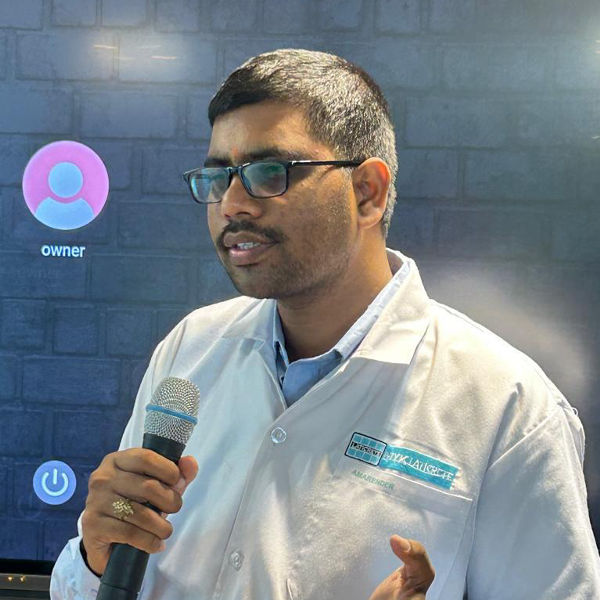
Hi, I’m Amarender Akupathni — founder of Amrtech Insights and a tech enthusiast passionate about AI and innovation. With 10+ years in science and R&D, I simplify complex technologies to help others stay ahead in the digital era.
